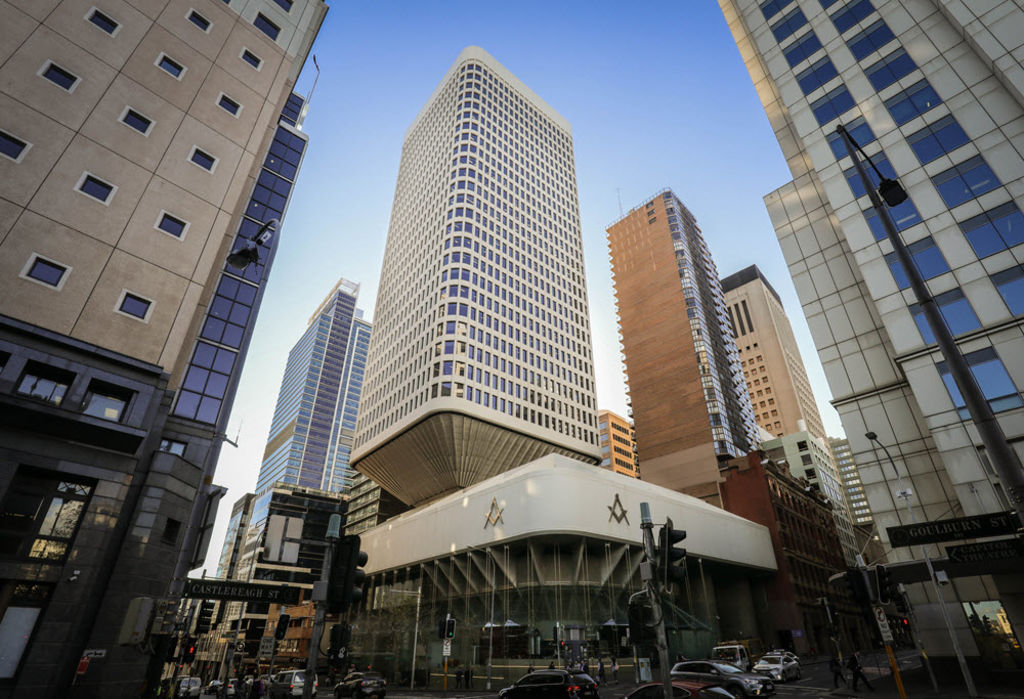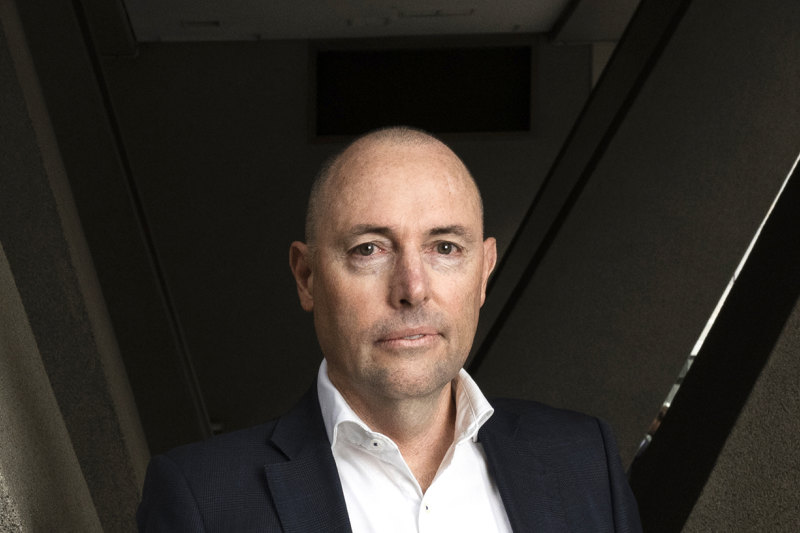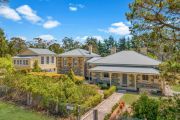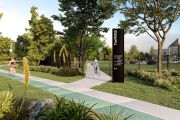
Owners of Modern Movement buildings in Sydney object to their proposed heritage listing
A row has erupted over the proposal by the City of Sydney council to heritage list several post-World War II buildings in the Sydney CBD.
Several owners have commissioned their own architectural reports on their Modern Movement commercial buildings to argue that they don’t meet the heritage criteria and thus don’t deserve to be preserved.
Architects hired by the owners of the Sydney Masonic Centre, the former County Council building on George Street and the William Bland Centre on Macquarie Street are disputing the findings of the council-hired architectural firm TKD Architects, that they should be protected.
They are three of nine examples of Modern Movement architecture built between 1945 and 1975 that the council believes should be listed. The others include Martin Place’s MLC Centre, Town Hall House, the St Peter Julian’s Catholic Church and Monastery in Haymarket, the former Liverpool and London and Globe building on Pitt Street, the former Horwitz House on Sussex Street, Haymarket, and the Earth Mother play sculpture at Cook and Phillip Park.
The most high-profile of the three in dispute, the Sydney Masonic Centre on Castlereagh Street, was designed by Joseland and Gilling and built in 1978. It was proposed for heritage listing on the basis of being an excellent example of post-war Brutalist architecture.
But a report commissioned by its owners, from Weir Phillips Heritage and Planning’s Philip North and James Phillips, says otherwise.
“When completed in 1979 this building demonstrated the core characteristics of Brutalist architecture including the use of assertive geometric forms, dominating scale and an expression of the basic structure of off-form concrete as the principal aesthetic device,” they wrote.
“Since that time, however, it has been subject to significant and highly visible alterations and additions which have eroded the original architectural vision and fundamentally changed its external character.’’
In addition, they state that the new tower built over the original podium is finished in painted concrete and lightweight cladding rather than the raw concrete originally conceived.
“The effect of all these changes has been to irreparably alter the architectural character of the building so that it no longer exhibits the key characteristics of the Brutalist style and is not representative of the Brutalist movement,” the report said.
A City of Sydney spokeswoman said the heritage reports provided by landowners were viewed as submissions as part of the public exhibition period.
“All submissions will be reviewed, considered and reported to the council and Central Sydney Planning Committee,” she said. Submissions close on September 16.
Heritage architect John Oultram, of Heritage and Design, said in some situations, where there were conflicting heritage reports, the council might opt to have the reports peer reviewed, or bring in other experts to find a balance.
“The City of Sydney usually takes these things very seriously and the methodology used in these reports is pretty sound,” he said. “But while the level of history and of change can be established, putting the buildings in context and assessing their comparative qualities does involve an element of subjective opinion.”
The architects employed by the owners of the former County Council building dispute that structure’s listing on a similar basis to that of the Sydney Masonic Centre.
Designed by Fowell, Mansfield and Maclurcan and constructed in 1968, it is proposed to be listed as an important late-20th-century example of the post-war International Style.
But Extent Heritage Advisors, commissioned by the building’s owners Far East Town Hall Pty Ltd, said the building’s fabric, both externally and internally, had also been substantially altered and there was very little original remaining. Also, they said that the building’s architects were associated primarily with the design of churches and infrastructure, rather than large-scale commercial buildings, and as a practice the firm did not have a lasting impact on Australian architecture.
“The building is at best an ordinary example that draws on elements of the International Style,” they said, insisting the assertion of local significance was ‘tenuous’.
“Claims that it is a fine example of a later-twentieth century International Style commercial building have not been substantiated…The tall rectilinear tower with a low horizontal podium is a typical building typology used since the 1920s to the present day and there are a number of other buildings built in the 1960s and 1970s in Sydney with this form.”
The listing for a third building is also being strenuously contested. The owners of the 1960 Hans Peter Oser-designed William Bland Centre on Macquarie Street commissioned Graham Brooks, the director of GBA Heritage, to assess its heritage value. He concluded that the curtain-wall block developed to provide small-suite medical and dental professional rooms is “relatively undistinguished”.
He said in his report, “Apart from its glazed façade, the William Bland Centre does not sufficiently exhibit the Modern Movement characteristics identified in the TKD study to warrant being included in the nominated list.”
The recommendation for listing also talked about the landmark lift slab construction method used for the building, but Mr Brooks said that, by 1960, there were some 23 projects underway or completed using the lift slab technique. In addition, with the William Bland Centre, “The physical evidence of the lift form technique is now ‘buried’ within the structural system of the building and total inaccessible for future research.”
The Modern Movement period is described by the NSW Heritage Council as having produced some of the 20th Century’s most important architecture, including the Modern, International, Brutalist and Sydney schools which drove much of the current look of Central Sydney.
Lord Mayor Clover Moore has said in the past that, with so many buildings from this period demolished or modified beyond recognition, it was important that the pick of the remainder were preserved for future generations.
One report commissioned from Urbis on St Peter Julian’s Church on George Street, Haymarket, by its owners, came to the conclusion that its listing would be justified.
“Urbis is supporting the heritage listing of St Peter Julian’s Church,” said Urbis director Jonathan Bryant. “Our research and analysis has found that St Peter Julian’s Catholic Church has historic, associative and aesthetic significance on a local level.
“The building is an excellent example of post-World War II Modernist ecclesiastic architecture in NSW.”
Andrew Woodhouse, the president of the Potts Point and Kings Cross Heritage Society, said the council’s move to list the buildings was “controversial” and that it should not “ignore owners’ views on their own buildings”.
“I object to heritage-listing items where the owners raise valid objections,” he said, adding that these objections appeared to be ”convincing”.
“Council should now set aside the proposals for sites objected to and undertake further analysis based on this new evidence,” he said. “Good heritage planning requires certainty, consistency and clarity.”
Get a weekly roundup of the latest news from Commercial Real Estate, delivered straight to your inbox!






